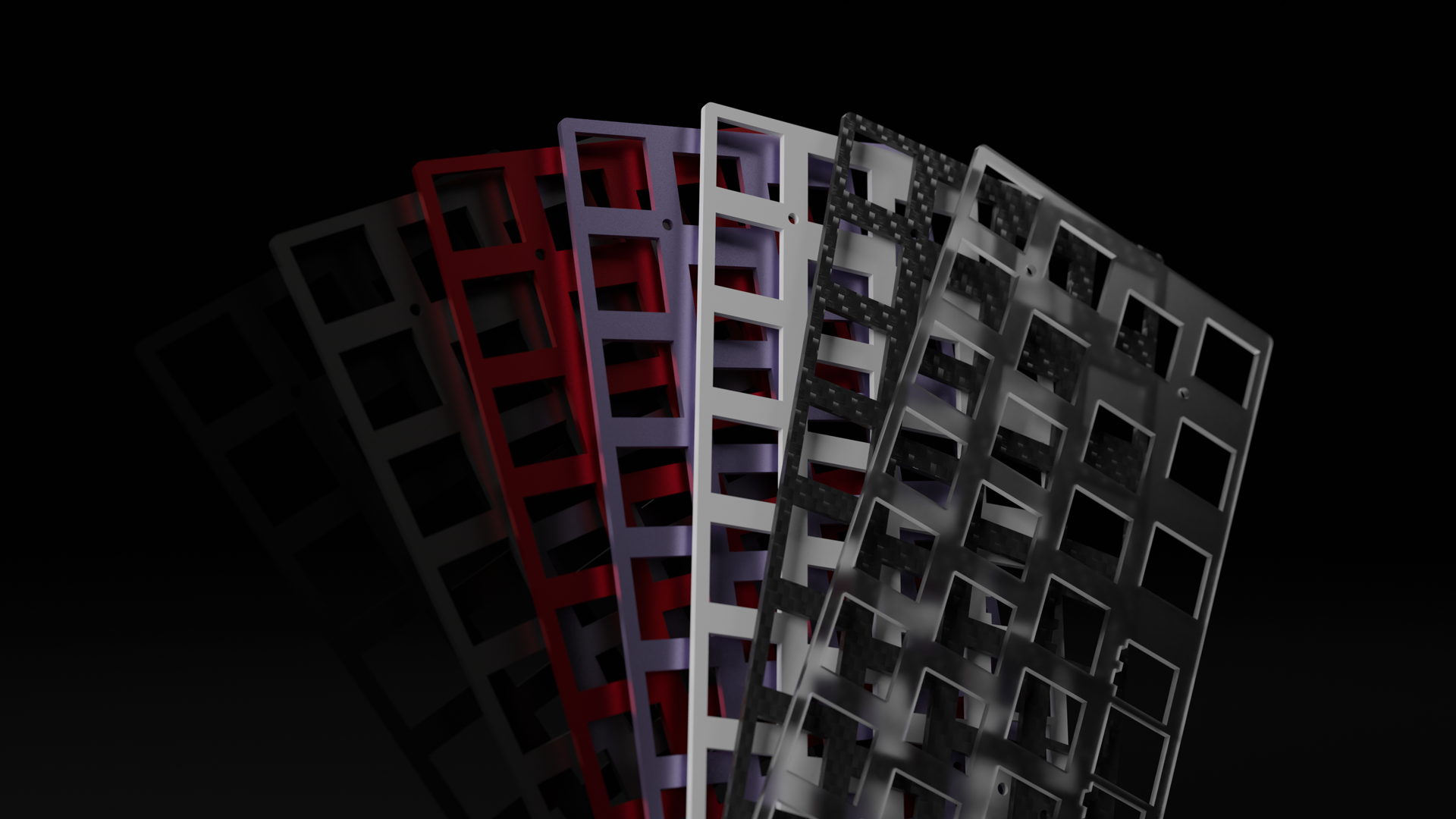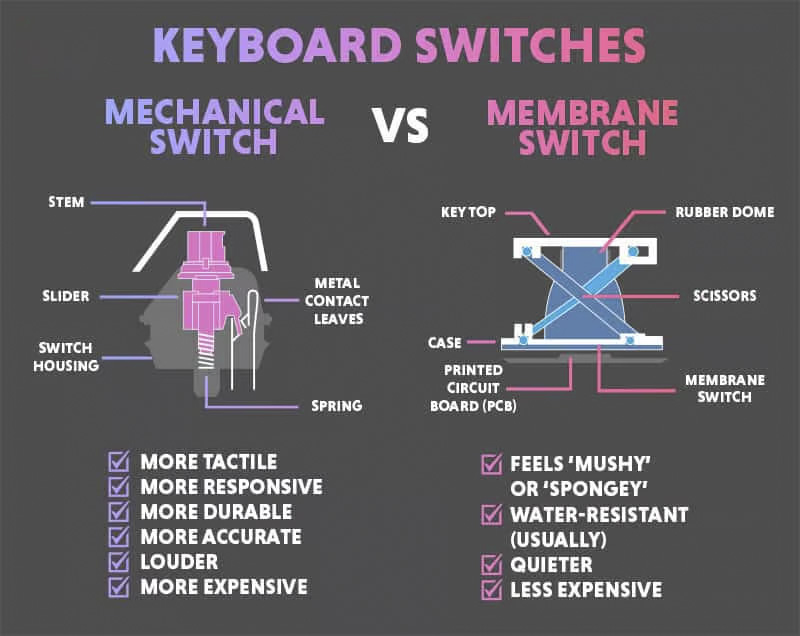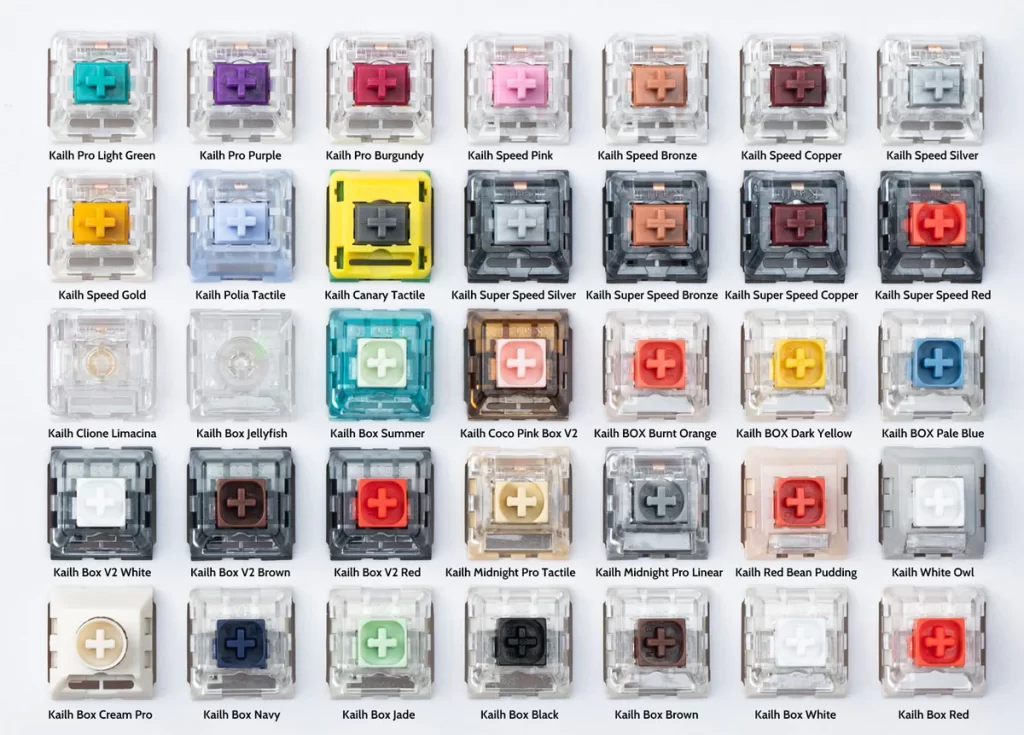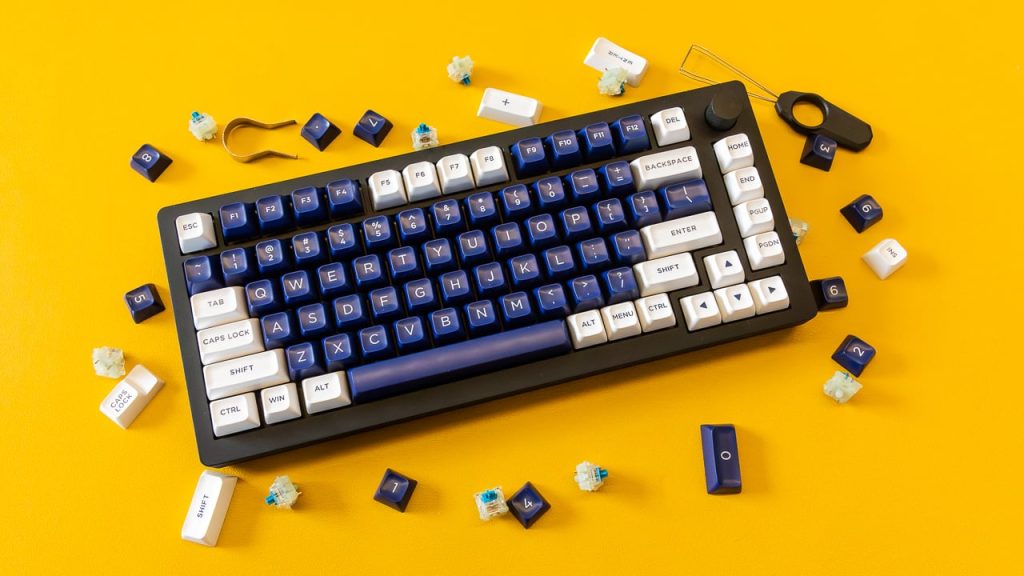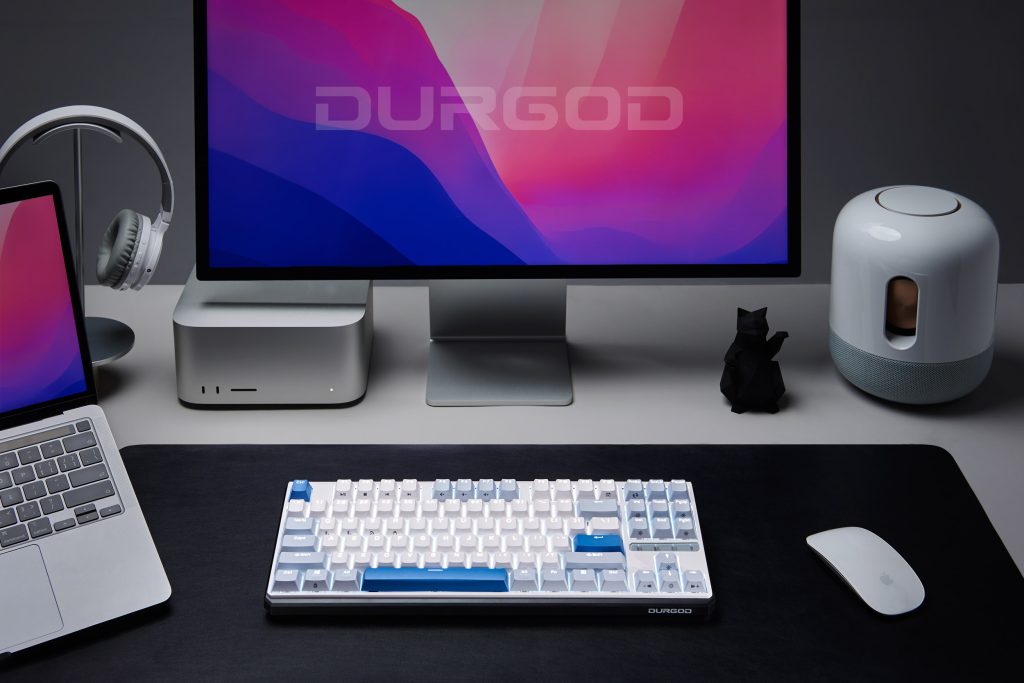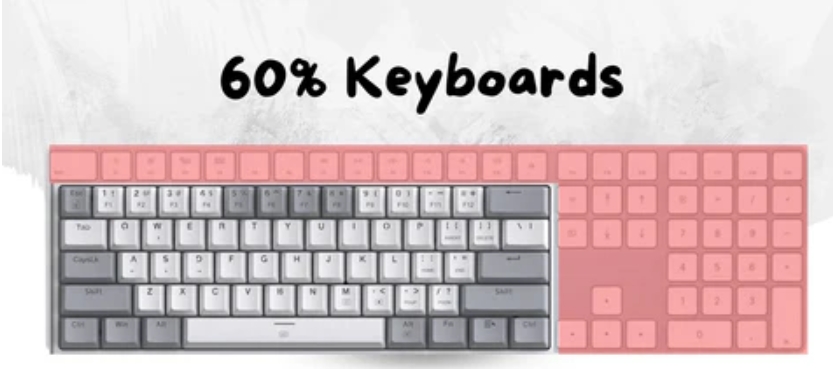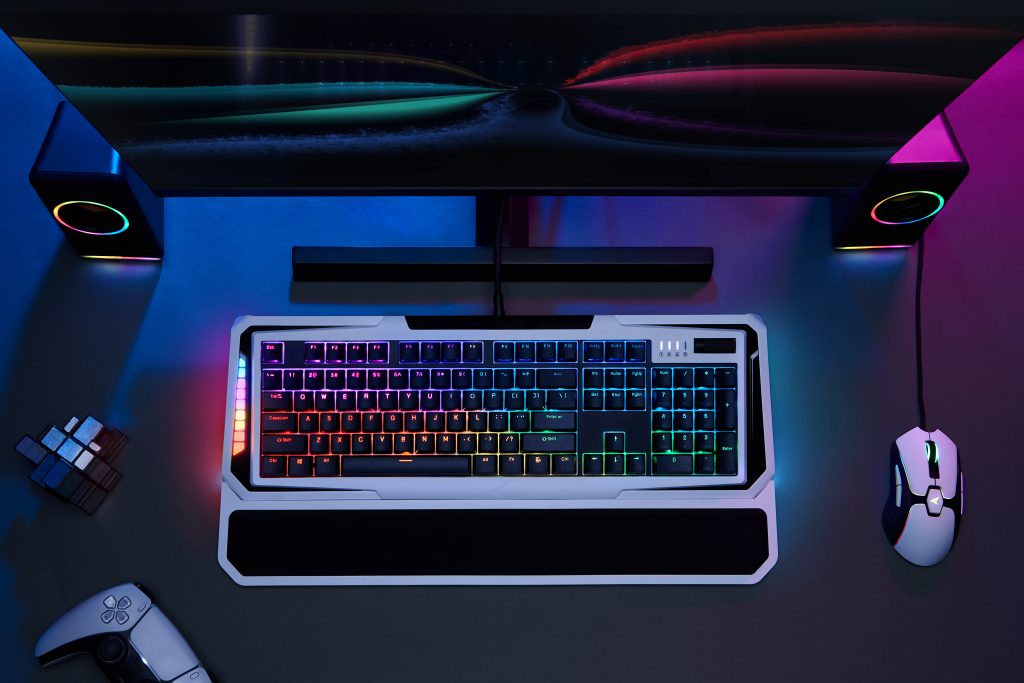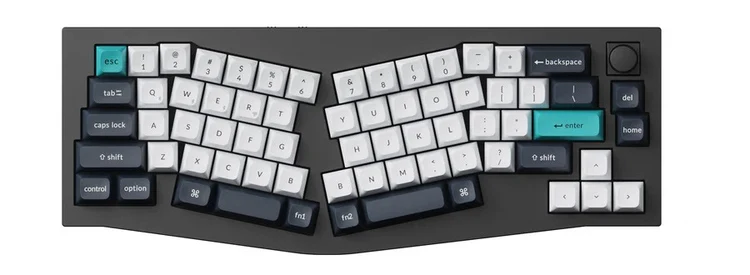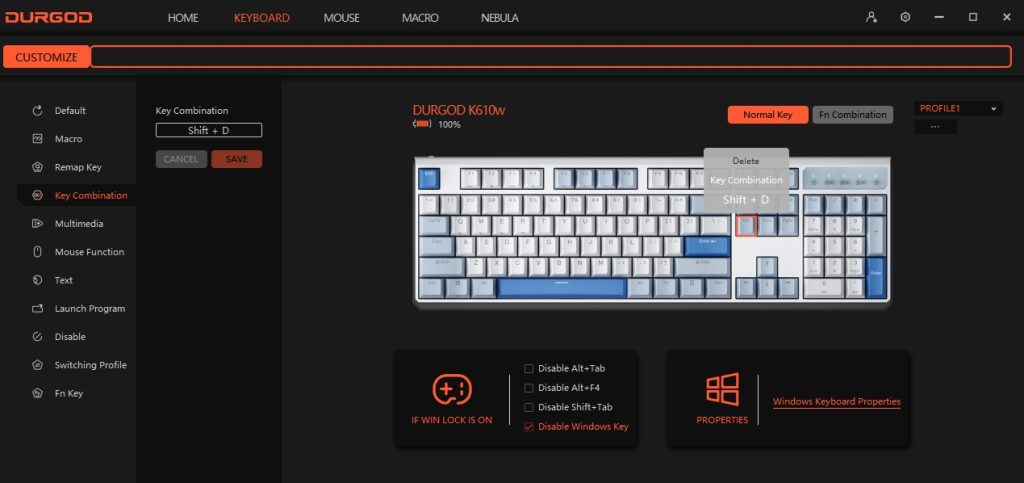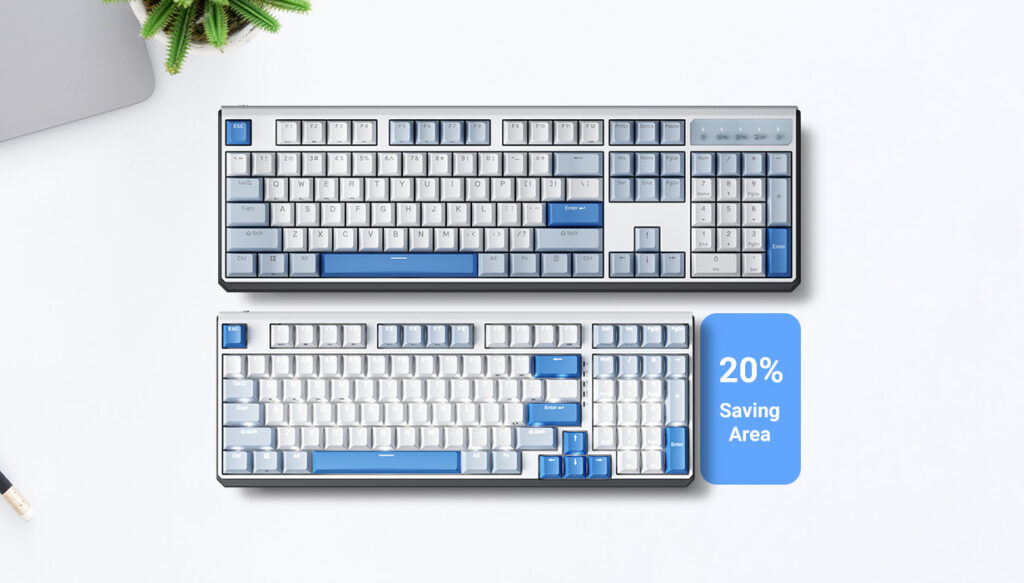The plate in a mechanical keyboard, a crucial yet often overlooked component, significantly impacts the keyboard’s feel and performance.
Function and Purpose
- Support for Switches: Positioned between the PCB and switches, the plate stabilizes the switches, enhancing stability.
- Typing Feel and Sound: It greatly influences keystrokes’ feel and sound, with variations in material and thickness altering the response.
Common Materials
- Aluminum: Favored for its weight-to-rigidity ratio, providing a firm typing sensation and moderate acoustics.
- Steel: Offers unparalleled sturdiness and a louder typing sound, contributing to a more resonant experience.
- Brass: Delivers a premium, weighty feel with distinct sound qualities but at a higher price point.
- Polycarbonate/Plastic: These materials yield a softer feel and quieter keystrokes, offering flexibility.
- Carbon Fiber: Known for its strength yet lightweight nature, it presents a unique balance in typing dynamics.
Types of Plates
- Full Plate: Ensures maximum support across the keyboard, stabilizing all switches.
- Half Plate: Supports only alphanumeric keys, allowing more flex in other areas for a varied typing feel.
- No Plate: Direct PCB mounting provides the softest feel and greatest flexibility in typing experience.
Considerations in Choosing a Plate
- Typing Experience: Material choice directly affects stiffness, sound, and feel, heavily influenced by personal preference.
- Design and Compatibility: Ensure the plate fits the keyboard’s layout and case.
- Aesthetics: Some opt for materials that enhance the keyboard’s visual appeal.
- Durability and Weight: Metal plates offer longevity and added weight, impacting portability.
- Cost: Metals like brass tend to be pricier than plastic or polycarbonate options.
Selecting a mechanical keyboard plate involves weighing personal typing preferences against the material’s characteristics, design compatibility, aesthetics, and budget. While aluminum and steel are popular for their balanced features, materials like brass, polycarbonate, or carbon fiber cater to specific tastes. Whether customizing or building from scratch, the plate selection is key to defining the overall typing experience.
For more knowledge of mechanical keyboards, visit DURGOD.



